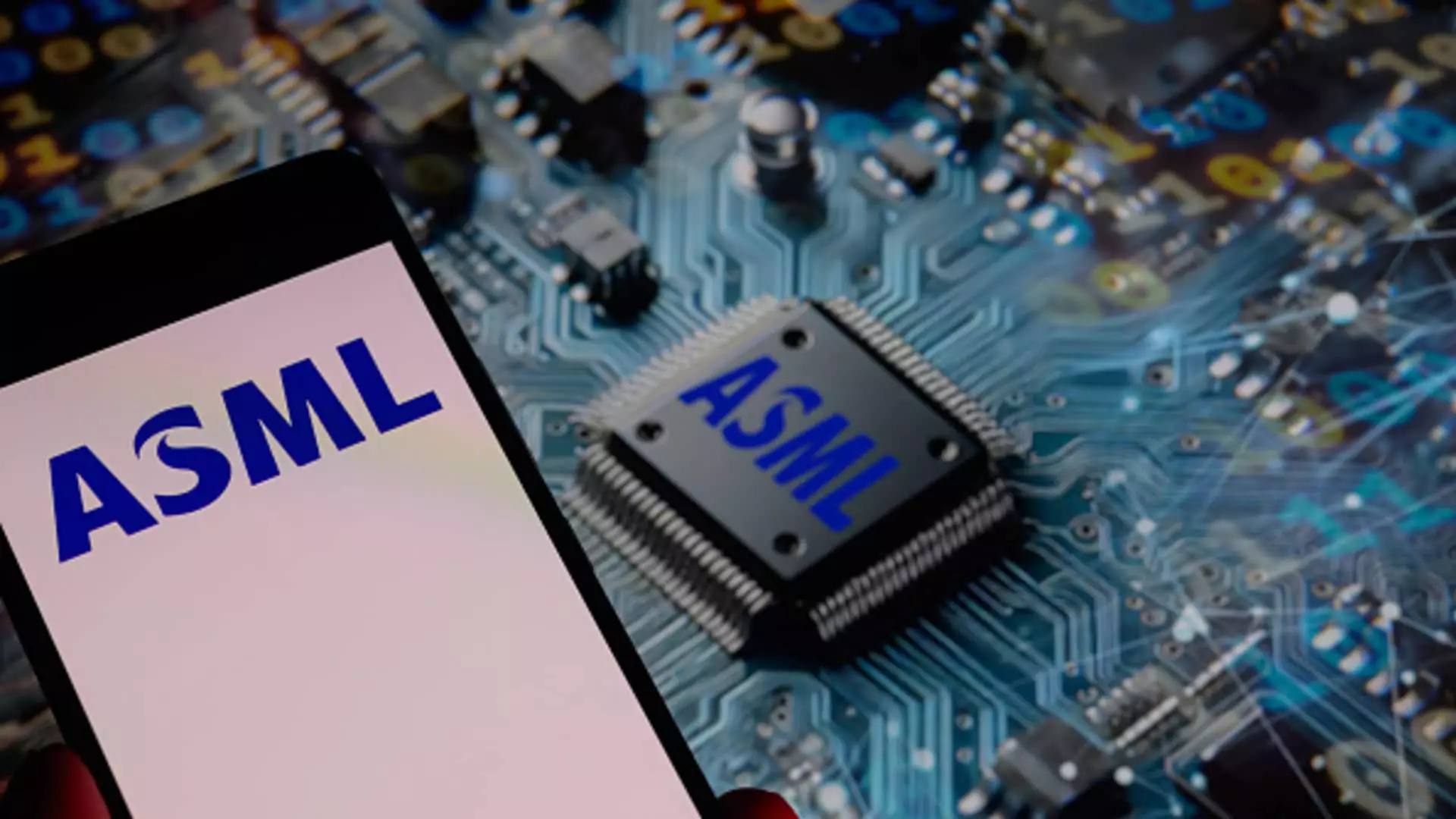In the tumultuous landscape of global tech, a cataclysmic shift has shaken the semiconductor industry to its core: ASML, a cornerstone of silicon innovation, has seen over $130 billion vanish from its market capitalization within the span of just a year. Once a titan basking in the glow of market highs—exceeding 1,000 euros per share in July 2022—its stock has plummeted to a value reflective of panic and erosion of investor confidence. This rapid decline isn’t merely an isolated incident; it serves as a stark indicator of the larger geopolitical tumult and economic malaise stemming from escalating trade tensions, particularly between the United States and China.
The Weight of Global Tensions
The semiconductor supply chain is akin to a finely tuned machine—interdependent and precarious. ASML stands at its helm, designing cutting-edge extreme ultraviolet lithography (EUV) machines essential for manufacturing advanced microchips. However, U.S. restrictions on chip exports to China, coupled with ongoing tariff discussions, have cast a pall over ASML’s prospects. The notion of a trade war, driven by nationalistic policies and protectionist fervor, looms like a specter over the industry. Industry experts like Stephane Houri from ODDO BHF notably express concern about an overarching fear settling among equipment manufacturers—a fear directly linked to the uncertainties ingrained in U.S.-China relations.
The ban on shipping advanced machinery to China is particularly alarming. This restriction not only stifles ASML’s revenue potential but also indicates a deliberate attempt by the U.S. to stifle technological advancements in a nation deemed a strategic rival. ASML’s CEO, Christophe Fouquet, foreshadows a shift in business dynamics, suggesting that China’s share in ASML’s revenue may dwindle significantly by 2025. This is not merely a loss of income; it reflects a seismic shift in the global technology landscape, where dominance is increasingly dictated by geopolitical alignments rather than market dynamics.
The Tariff Quandary
The specter of tariffs unveiled by Donald Trump when he assumed the presidency continues to haunt not just ASML, but the larger semiconductor sector. The threat of tariffs hangs like a sword of Damocles over the industry, compelling investors to tread carefully. The debate around whether firms are over-investing in AI adds to the tumult, raising pertinent questions regarding the true demand for chips. If businesses are scrambling to expand their foothold in AI but find the market isn’t as receptive as anticipated, we could see a ripple of instability throughout the semiconductor ecosystem.
Moreover, analysts remain cautiously optimistic despite these dismal prospects, with target prices suggesting a potential rebound for ASML. This optimism appears misplaced and tinged with overconfidence, especially when the underlying issues of international trade and market stability are unresolved. The notion that an eventual agreement between the U.S. and Europe could resolve some of these uncertainties feels more like a hopeful aspiration than a plausible outcome, given the complexity of global politics today.
Judging the Future
The continued reliance on ASML’s high-tech manufacturing is, ironically, both its strength and its Achilles’ heel. As the sole producer of EUV machines, ASML enjoys a significant moat, but that very exclusivity also binds it to the fortunes of its international sales, particularly in China. The idea that companies like Samsung and Intel will continue to drive demand for next-gen chipmaking tools is contingent on a stable market environment—something we currently lack.
Yet, the glass-is-half-full perspective held by some market analysts who remain “bullish” on ASML fails to account for the long-term implications of continued trade friction and shattered investor confidence. Without substantial international cooperation and the easing of trade barriers, the semiconductor industry, with companies like ASML at its forefront, may find itself entangled in a web of competition that only benefits those sitting on the sidelines.
In an age where technological capabilities are paramount, a $130 billion loss is not just a blip in the stock market; it’s a glaring reminder of the fragility of the systems we’ve built, begging the question: at what cost do we pursue national interests over collaborative growth? The cautionary tale of ASML should serve as a wake-up call, urging us all to critically reevaluate the delicate balance between innovation and geopolitical strife.

